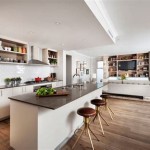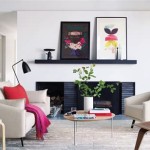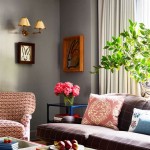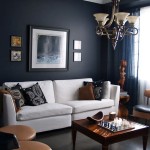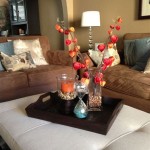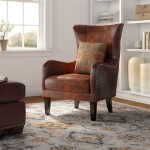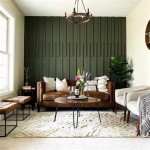Living Room House Decorating Ideas: Creating a Harmonious and Functional Space
The living room serves as a central hub within a home, often acting as a space for relaxation, entertainment, and social gathering. Effective decorating transforms a living room from a mere collection of furniture into a cohesive and inviting environment that reflects the homeowner's personal style and lifestyle. Strategic planning and consideration are paramount in achieving a balanced aesthetic that maximizes both comfort and functionality.
A well-designed living room should be visually appealing and conducive to the intended uses of the space. This requires a thoughtful approach to color palettes, furniture selection, lighting, and the incorporation of decorative elements. Understanding fundamental design principles and adapting them to specific spatial constraints is crucial in creating a living room that feels both comfortable and stylish.
Define the Purpose and Functionality of the Living Room
Before initiating any decorating project, defining the primary purpose and desired functionality of the living room is essential. Consider how the space will be primarily used. Will it function as a formal sitting area for entertaining, a casual family room for relaxation, or a multi-purpose space for both? Understanding these needs will inform decisions regarding furniture choices, layout, and overall design direction.
If the living room is intended as a space for entertaining, ample seating arrangements and a focal point, such as a fireplace or entertainment center, are important considerations. Conversely, a family-oriented living room might prioritize comfortable seating, durable materials, and adequate space for children to play. A multi-purpose living room requires a more flexible design that can adapt to various activities, potentially incorporating features like a home office area or a reading nook.
Identifying the intended uses of the living room directly influences the selection of furniture. For instance, a formal living room might benefit from a well-appointed sofa and armchairs, while a family room might prioritize a sectional sofa or comfortable lounge chairs. Storage solutions should be integrated to minimize clutter and maintain a sense of order. Understanding how the space is intended to be used allows for a more purposeful and efficient decorating strategy.
Selecting a Cohesive Color Palette and Material Scheme
The color palette forms the foundation of any successful decorating scheme. It sets the overall mood and atmosphere of the living room. Choosing a cohesive color palette involves considering the existing architectural elements of the space, the amount of natural light available, and the desired aesthetic. The selected colors should complement each other and create a sense of harmony.
Neutral colors, such as white, gray, beige, and taupe, provide a versatile backdrop for a living room design. These colors can be easily paired with accent colors to add visual interest and personality. Warm neutrals create a cozy and inviting atmosphere, while cool neutrals evoke a sense of sophistication and tranquility. The choice of neutral tone should be carefully considered to align with the overall design vision.
Accent colors can be incorporated through various elements, including throw pillows, rugs, artwork, and decorative accessories. These pops of color add visual interest and prevent the space from feeling monotonous. The selection of accent colors should complement the neutral base and create a balanced aesthetic. Consider using analogous colors, which are colors that are adjacent to each other on the color wheel, or complementary colors, which are colors that are opposite each other on the color wheel.
The selection of materials further contributes to the overall aesthetic. Mixing different textures, such as wood, metal, glass, and fabric, adds depth and visual interest to the space. Consider the durability and maintenance requirements of each material, particularly in high-traffic areas. For instance, a durable rug made of natural fibers, such as wool or sisal, is a practical choice for a living room that experiences heavy use. Careful consideration of both color and material harmony is essential for a visually appealing and cohesive living room.
Optimizing Lighting for Ambiance and Functionality
Lighting plays a critical role in creating the desired ambiance and functionality of a living room. A well-lit living room should incorporate a combination of natural light, ambient lighting, task lighting, and accent lighting. This layered approach ensures that the space is both visually appealing and adequately illuminated for various activities.
Maximizing natural light is paramount. Ensure that windows are unobstructed and allow ample sunlight to enter the space. Consider using sheer curtains or blinds to filter the light and create a soft, diffused effect. The strategic placement of mirrors can also reflect natural light and brighten up the room.
Ambient lighting provides general illumination for the living room. This can be achieved through the use of recessed lighting, chandeliers, or pendant lights. The level of ambient lighting should be adjustable to suit different moods and activities. Dimmers allow for greater control over the overall brightness of the space.
Task lighting provides focused illumination for specific activities, such as reading or working. Floor lamps and table lamps are ideal for task lighting. Position these lamps strategically to provide adequate light without creating glare. Adjustable lamps allow for further customization of the light output.
Accent lighting is used to highlight specific features in the living room, such as artwork, architectural details, or decorative accessories. Track lighting and spotlights are well-suited for accent lighting. These lights can be directed to draw attention to specific elements and create visual interest. The careful integration of all lighting types contributes to a well-balanced and functional living room design.
Selecting Furniture that Balances Comfort and Style
Furniture is a fundamental component of any living room design. The selection of furniture should be guided by both comfort and style considerations. Scale, proportion, and material should be carefully considered to ensure that the furniture complements the overall design aesthetic and meets the functional needs of the space.
The sofa serves as the anchor of the living room. Choosing the right sofa involves considering factors such as size, shape, upholstery, and frame material. A sectional sofa is a versatile option for larger living rooms, providing ample seating for multiple people. A loveseat or smaller sofa is better suited for smaller spaces. The upholstery should be durable, comfortable, and easy to clean. Leather and microfiber are popular choices for their durability and stain resistance.
Armchairs provide additional seating and can add visual interest to the living room. Choose armchairs that complement the sofa in terms of style and upholstery. Consider the size and shape of the armchairs to ensure that they fit comfortably within the space. Accent chairs can be used to add a pop of color or texture to the room.
Coffee tables provide a surface for drinks, books, and decorative accessories. Choose a coffee table that is proportional to the size of the sofa and other furniture. The height of the coffee table should be approximately the same as the height of the sofa cushions. Consider the shape of the coffee table to suit the overall design aesthetic. Round coffee tables are a good choice for smaller living rooms, while rectangular coffee tables are better suited for larger spaces.
Side tables provide additional surface space for lamps, books, and other items. Place side tables next to sofas and armchairs for convenient access. Choose side tables that complement the coffee table and other furniture in terms of style and material. The careful selection and placement of furniture is crucial for creating a comfortable and stylish living room.
Incorporating Decorative Accessories to Personalize the Space
Decorative accessories add personality and visual interest to a living room. These elements, which include artwork, throw pillows, rugs, curtains, and decorative objects, can be used to express personal style and create a cohesive design aesthetic. Strategic placement and careful selection are essential for achieving a balanced and visually appealing result.
Artwork is a powerful way to add personality and character to the living room. Choose artwork that reflects personal taste and complements the overall color palette. Consider the size and scale of the artwork in relation to the wall space. A large statement piece can serve as a focal point, while smaller pieces can be grouped together to create a gallery wall.
Throw pillows are a simple and affordable way to add color, texture, and pattern to the living room. Choose throw pillows that complement the sofa and armchairs in terms of style and color. Experiment with different sizes, shapes, and textures to create visual interest. Down-filled throw pillows offer superior comfort and support.
Rugs define the seating area and add warmth and texture to the living room. Choose a rug that is proportional to the size of the seating area. The rug should be large enough to anchor the furniture and create a cohesive grouping. Consider the material, pattern, and color of the rug in relation to the overall design aesthetic. Wool rugs are durable and stain-resistant, while synthetic rugs are more affordable and easier to clean.
Curtains add privacy, filter light, and enhance the overall aesthetic of the living room. Choose curtains that complement the color palette and style of the furniture. Consider the length and width of the curtains in relation to the size of the windows. Sheer curtains allow light to filter through, while blackout curtains provide privacy and block out light. The careful selection and placement of decorative accessories elevates the living room and reflects individual personality.
Maximizing Space and Storage Solutions
Efficient use of space and effective storage solutions are essential for maintaining a clutter-free and functional living room. Maximizing space involves strategic layout planning and the incorporation of multi-functional furniture. Storage solutions should be integrated seamlessly into the design to minimize clutter and maintain a sense of order.
In smaller living rooms, consider using multi-functional furniture to maximize space. A coffee table with built-in storage can provide a convenient place to store magazines, books, and other items. A sofa with a pull-out bed can be used as a guest bed for overnight visitors. Ottomans can serve as both seating and storage. Choosing furniture that serves multiple purposes is particularly beneficial in limited spaces.
Vertical storage solutions can help to maximize space in smaller living rooms. Bookshelves and floating shelves provide ample space for displaying books, artwork, and decorative objects. Shelves can be customized to fit specific needs and can be arranged in various configurations to create visual interest. Wall-mounted cabinets provide additional storage space and can be used to conceal clutter.
Baskets and bins are versatile storage solutions that can be used to organize various items. Place baskets under coffee tables or shelves to store blankets, toys, or magazines. Bins can be used to organize smaller items in drawers or cabinets. Choose baskets and bins that complement the overall design aesthetic of the living room.
Decluttering is an essential part of maximizing space and creating a more organized living room. Regularly remove items that are no longer needed or used. Donate or sell unwanted items to reduce clutter and create a more streamlined space. By implementing effective space-saving strategies and storage solutions, the living room can be transformed into a functional and inviting environment.
:strip_icc()/cdn.cliqueinc.com__cache__posts__212361__-2030968-1483470364.700x0c-8571e60cad7b42a981ab29ae10b5c153-497b002f87af4747b2ab38b560e7c0fd.jpg?strip=all)
How To Decorate A Living Room 20 Ideas And Common Mistakes

50 Inspirational Living Room Ideas Design

How To Decorate A Living Room 11 Designer Tips Houzz

77 Best Living Room Decor Ideas 2024 Unique

100 Living Room Decorating Ideas Design Photos Of Family Rooms

Living Room Decor Ideas For Your Home Design Cafe

Living Room Design Ideas For Any Budget Hgtv

Looking For Ideas To Decorate Your Living Room Designcafe

77 Best Living Room Decor Ideas 2024 Unique

Top 25 Living Room Decorations Ideas For 2024 Hurford Salvi Carr Blog

